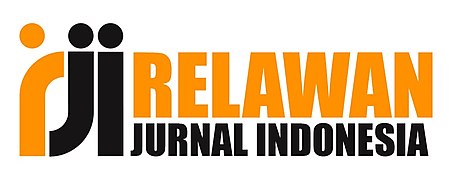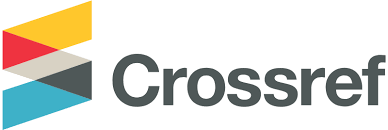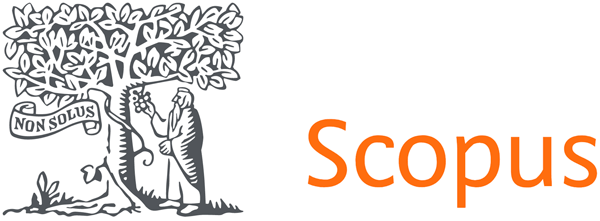Application of K-Means Algorithm in Clustering Model for Learning Management System Usage Evaluation
Abstract
The use of a learning management system (LMS) is one of the media that can be used to disseminate lecturer materials to students. Materials that can be uploaded on the LMS can be in the form of lecture materials in the form of files, videos, or questions. The effectiveness of LMS can be evaluated by looking at activities in using LMS. The effectiveness of using LMS can be seen from the log. Log results from LMS can be evaluated in various ways and one way is to use data mining clustering models. The clustering model can be used to create student groupings and the clustering results can be labeled in the form of categories, such as very good, good, and bad categories. This labeling depends on the clustering results that will be processed in the modeling. The research method uses CRISP DM which consists of business understanding, data understanding, data preparation, modeling, evaluation, and deployment. The beginning of the research process is carried out by taking log data in the Moodle LMS. The clustering model in this research will use the K-Means algorithm and the evaluation of clustering results will be evaluated for performance using the Davies-Bouldin method. Implementation of data mining processing using Rapid Miner application. The datasheet used is a datasheet taken from the LMS log of the Computer Programming course in the Mechanical Engineering study program - AKPRIND Institute of Science & Technology Yogyakarta odd semester of the 2021/2022 and 2022/2023 academic years. The results of the study resulted in the best clustering based on the Davies Bouldin method of 2. The clustering results, cluster 0 consists of 28 data named the category of frequent access to LMS and cluster 1 consists of 54 with the category of not frequent access to LMS.
References
Ademi, N., & Loshkovska, S. (2020). Clustering Learners in a Learning Management System to Provide Adaptivity. ICT Innovations, 1–14.
Agusriandi, Elihami, Syarif, I., & Samad, I. S. (2022). Model Analisis Aktivitas Tutor dalam Learning Management System Berdasarkan Data Log Menggunakan K-Means dan Deteksi. Jurnal Teknologi Informasi Dan Ilmu Komputer (JTIIK) Vol., 9(4), 709–716. https://doi.org/10.25126/jtiik.202294764
Ajiatmojo, A. (2021). Penggunaan E-Learning Pada Proses Pembelajaran Daring. TEACHING : Jurnal Inovasi Keguruan Dan Ilmu Pendidikan, 1(3), 229–235. https://doi.org/10.51878/teaching.v1i3.525
Alawi, S. J. S., & Shaharanee, Izwan Nizal Mohd Jamil, J. M. (2023). Clustering Student Performance Data Using K-Means Algorithms. Journal of Computational Innovation and Analytics, 2(1), 41–55.
Cenka, B. A. N., Santoso, H. B., & Junus, K. (2022). Analysing student behaviour in a learning management system using a process mining approach. Knowledge Management and E-Learning, 14(1), 62–80. https://doi.org/10.34105/j.kmel.2022.14.005
Cielen, D., Meysman, A. D. B., & Ali, M. (2016). Introducing Data Science.
Devia Kartika, & Hezy Kurnia. (2022). Penerapan E-Learning Sebagai Media Pembelajaran Dalam Menghadapi Pamdemi Covid -19. J-COSCIS : Journal of Computer Science Community Service, 2(1), 15–24. https://doi.org/10.31849/jcoscis.v2i1.7773
Dhika, H., Destiawati, F., Surajiyo, & Jaya, M. (2021). Data Mining Approach for Learning management system. IOP Conference Series: Materials Science and Engineering, 1088(1), 012013. https://doi.org/10.1088/1757-899x/1088/1/012013
Dutt, A., & Ismai, M. A. (2019). Can We Predict Student Learning Performance from LMS data ? A Classification Approach. Abstract—The Learning Management System (LMS ) Is a Common Occurrence in Most Educational Institutions. This System Is a Software Application Helping the Educator in Administration, Facilitation, and Tracking of Course Content to the Learner. Educators Ha, 326(Iccie 2018), 24–29.
Evale, D. S. (2017). L EARNING M ANAGEMENT S YSTEM WITH P REDICTION M ODEL AND C OURSE - CONTENT R ECOMMENDATION M ODULE. Journal of Information Technologi Education Research, 16, 437–457.
Fitriani, Y. (2020). Analisa Pemanfaatan Learning Management System (Lms) Sebagai Media Pembelajaran Online Selama Pandemi Covid-19. Journal of Information System, Informatics and Computing, 4(2), 1. https://doi.org/10.52362/jisicom.v4i2.312
Job, M. A. (2018). Data Mining Techniques Applying on Educational Dataset to Evaluate Learner Performance Using Cluster Analysis. European Journal of Engineering Research and Science, 3(11), 25–31. https://doi.org/10.24018/ejers.2018.3.11.966
Lestariningsih, T., Artono, B., & Afandi, Y. (2020). Evaluasi Implementasi E-learning dengan Metode Hot Fit Model. Innovation in Research of Informatics (INNOVATICS), 2(1), 22–27. https://doi.org/10.37058/innovatics.v2i1.1342
Ljubobratović, D. (2019). Using LMS Activity Logs to Predict Student Failure with Random Forest Algorithm. 7th International ConferenceThe Future of Information Sciences INFuture2019: Knowledge in the Digital Age, 113–119.
Maloney, S., Axelsen, M., Galligan, L., Turner, J., Redmond, P., Brown, A., Basson, M., & Jill Lawrence. (2022). Using LMS Log Data to Explore Student Engagement with Coursework Videos. Online Learning Journal, 26(4), 399–423. https://doi.org/10.24059/olj.v26i4.2998
Nurdiani, S., Linawati, S., Ade Safitri, R., & Panca Saputra, E. (2019). Pengelompokan Perilaku Mahasiswa Pada Perkuliahan E-Learning dengan K-Means Clustering. Jurnal Kajian Ilmiah, 19(2), 126–133.
Okike, E. U., & Mogorosi, M. (2020). Educational Data Mining for Monitoring and Improving Academic Performance at University Levels. (IJACSA) International Journal of Advanced Computer Science and Applications, 11(11), 570–581.
Oktaria, S. D., & Hadiwinarto. (2020). Evaluasi Penerapan Pembelajaran Online Menggunakan E- Learning di Masa Pandemi Covid-19 pada Tingkat Perguruan Tinggi. Jaeducation, 0581(1), 24–29. http://jurnal.um-palembang.ac.id/jaeducation
Ramaswami, G., & Susnjak, T. (2022). On Developing Generic Models for Predicting Student Outcomes in Educational Data Mining. Big Data and Cognitive Computing Article Computing, 6(1).
Rauf, A., & Amin, A. (2021). Evaluasi Pemanfaatan E-Learning dalam Proses Pembelajaran Distance Learning di SMP IIBS Al Maahira Malang. Tarbiyatuna: Jurnal Pendidikan Ilmiah, 6(1), 41–52. https://doi.org/10.55187/tarjpi.v6i1.4406
Rizal, F., Wardina, U. V., & Ambiyar, A. (2022). Evaluasi E-learning di Fakultas Teknik Universitas Negeri Padang. Jurnal Pendidikan Teknologi Kejuruan, 5(1), 23–27. http://jptk.ppj.unp.ac.id/index.php/jptk/article/view/260
Rusli, M., Hermawan, D., & Supuwiningsih, N. N. (2020). E-learning, Memahami Konsep, Teknologi, dan Arah Perkembangan. Penerbit Andi.
Septiani, I. W., Fauzan, A. C., & Huda, M. M. (2022). Implementasi Algoritma K-Medoids Dengan Evaluasi Davies-Bouldin-Index Untuk Klasterisasi Harapan Hidup Pasca Operasi Pada Pasien Penderita Kanker Paru-Paru. Jurnal Sistem Komputer Dan Informatika (JSON), 3(4), 556. https://doi.org/10.30865/json.v3i4.4055
Setiawati, A. (2021). Implementasi Pembelajaran Jarak Jauh Menggunakan LMS pada Lembaga Diklat Pemerintah di Indonesia Implementation of Distance learning Using LMS at Government Education and Training Institutions in Indonesia. Jurnal Bestari, 2(1), 1–22.
Suyono, Renaldo, N., Andi, Hocky, A., Suhardjo, Purnama, I., & Suharti. (2022). Training on the use of statistical software to improve teacher class action research performance at the Kerinci Citra Kasih Foundation. International Journal of Advanced Multidisciplinary Research and Studies, 2(4), 575–578.
Tamada, M. M., Giusti, R., & Netto, J. F. de M. (2022). Predicting Students at Risk of Dropout in Technical Course Using LMS Logs. Electronics (Switzerland), 11(3). https://doi.org/10.3390/electronics11030468
Wijaya, Y. A., Kurniady, D. A., Setyanto, E., Tarihoran, W. S., Rusmana, D., & Rahim, R. (2021). Davies Bouldin Index Algorithm for Optimizing Clustering Case Studies Mapping School Facilities. TEM Journal, 10(3), 1099–1103. https://doi.org/10.18421/TEM103-13
Wiragunawan, & Ngurah, I. G. (2022). Pemanfaatan Learning Management System (Lms) Dalam Pengelolaan Pembelajaran Daring Pada Satuan Pendidikan. EDUTECH : Jurnal Inovasi Pendidikan Berbantuan Teknologi, 2(1), 83–90. https://doi.org/10.51878/edutech.v2i1.981
Yağcı, M. (2022). Educational data mining : prediction of students ’ academic performance using machine learning algorithms. Smart Learning Environments Volume, 9(11). https://doi.org/10.1186/s40561-022-00192-z
Copyright (c) 2023 Journal of Applied Business and Technology

This work is licensed under a Creative Commons Attribution-ShareAlike 4.0 International License.




















